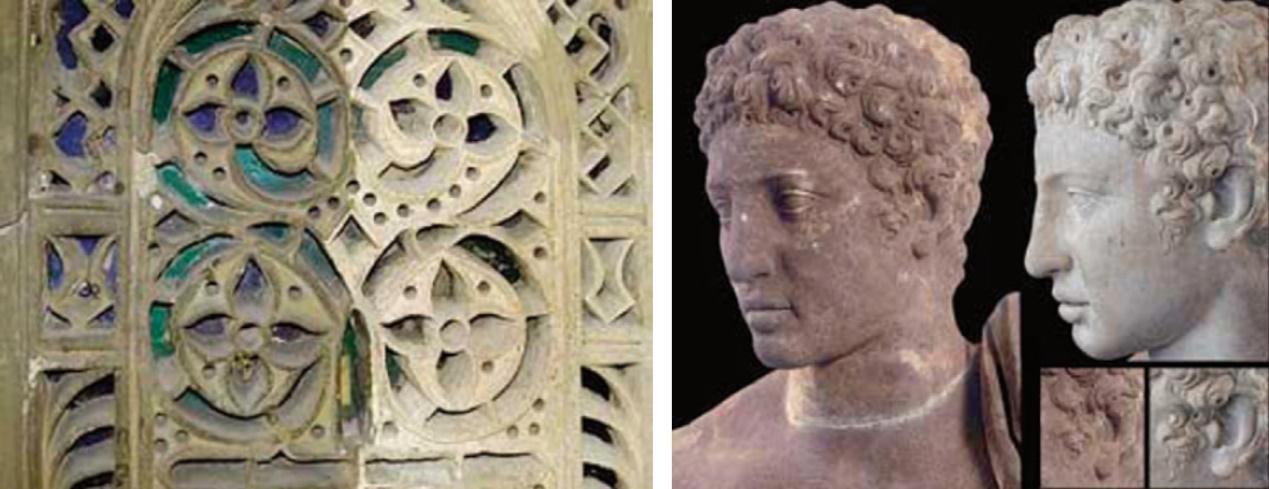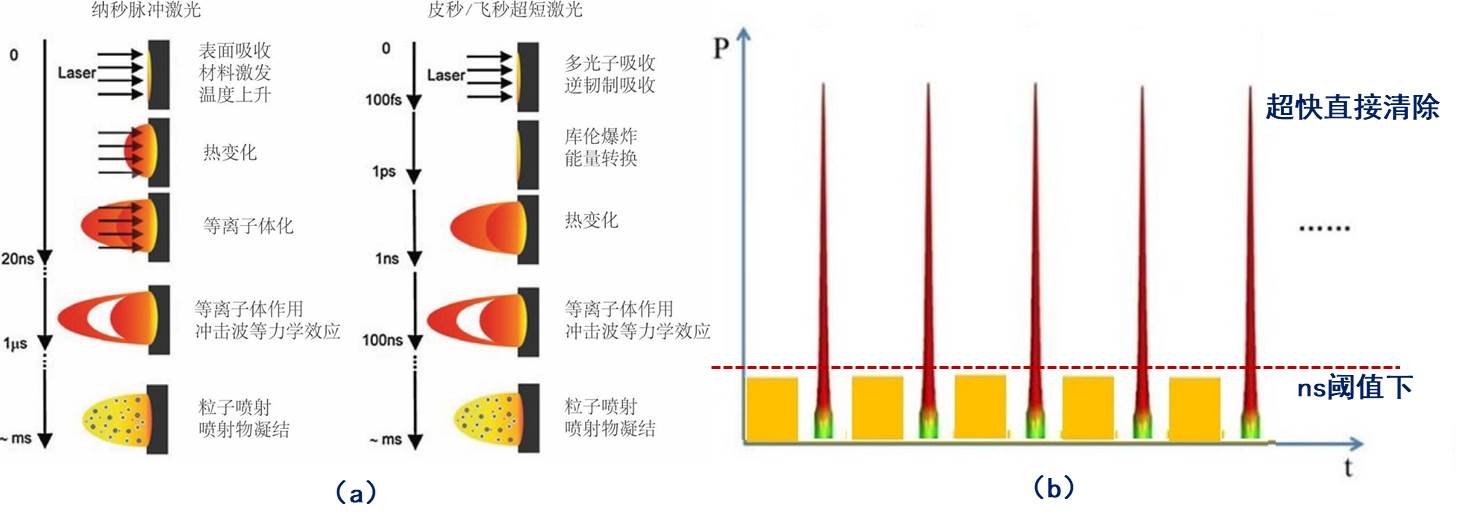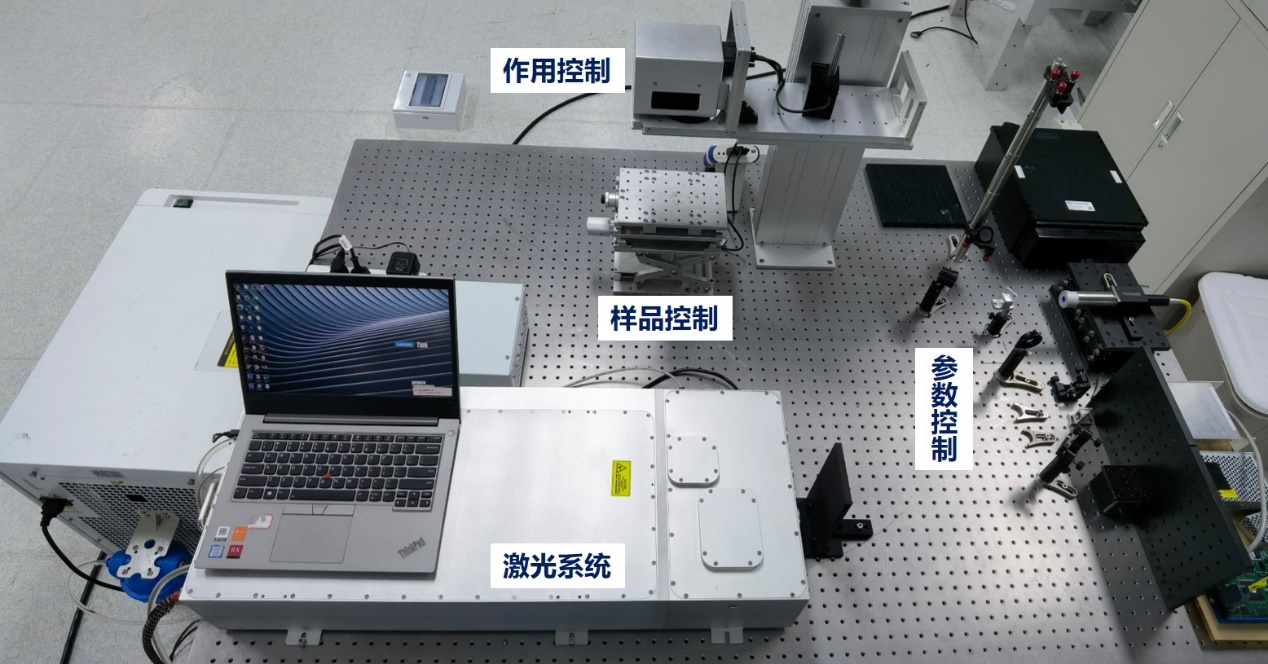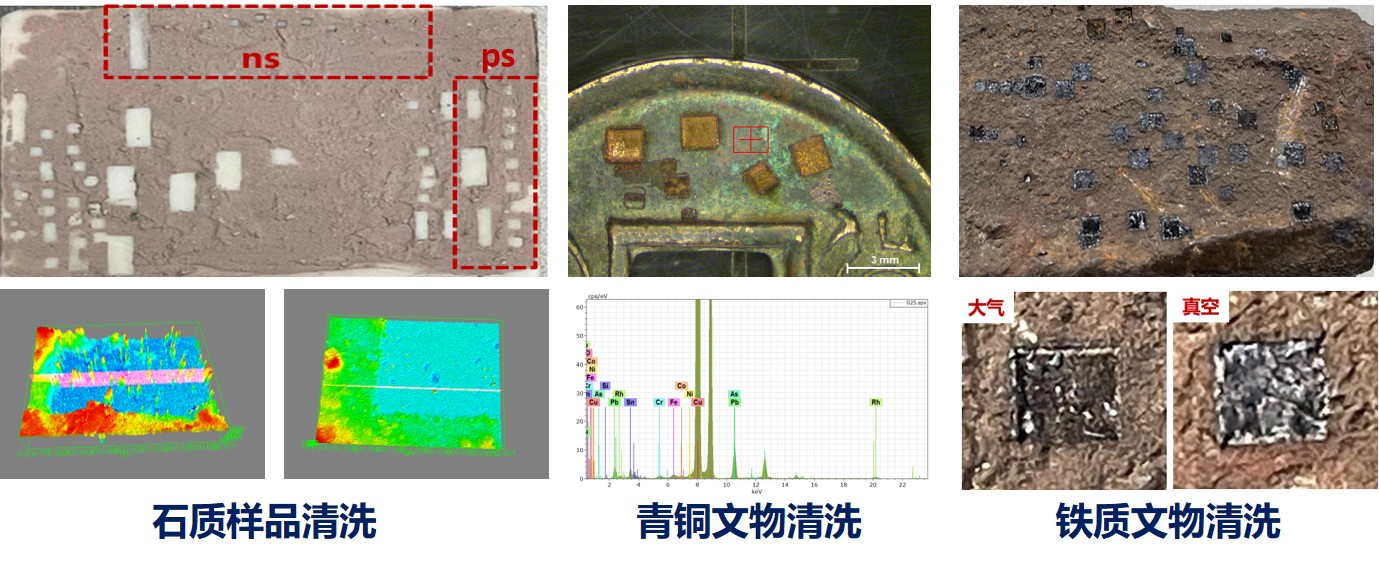The application of the laser cleaning technique in the field of cultural relic cleaning and conservation began in the 1970s after the invention of laser. It was an effective attempt and a successful application of advanced laser technology in conventional cultural heritage conservation work. Compared with the traditional cleaning methods, such as mechanical cleaning, chemical cleaning and ultrasonic cleaning, laser cleaning has unique advantages: customizable for different object, environmentally friendly, contactless and easy to control. It has gradually become an important means of cultural relic cleaning, restoration and conservation.
After decades of development, especially with the widespread of the lamp-pumped Nd: YAG nanosecond laser, people not only carry out laser cleaning experiments on a wide range of cultural relic types and optimize the cleaning parameters in the lab, but also begin to try out laser cleaning on actual cultural relics, including stone objects, metal objects, and oil paintings. In particular, there are already success cases of on-site laser cleaning for some well-known marble carvings in Europe, such as the Amiens Cathedral in France and the stone-glass window artifacts and the Hermes sculpture in Athens.

Figure 1. A comparison of stone cultural relics before and after laser cleaning
Laser cleaning works by radiating high-power laser beams on the surface of the cultural relic to be cleaned, so as to ablate or strip the unwanted attachments (dirt, paint, rust, etc.) from the surface without damaging the substrate layer of the cultural relic. The laser cleaning process includes laser energy absorption, thermal expansion of pollutant particles/vibration of the substrate surface, ablation/gasification and decomposition/stripping, etc. The cleaning results are mainly affected by the characteristics of the laser beam, the physical parameters of the substrate and the pollutants, and the laser energy absorption of pollutants. Therefore, in order to achieve the best cleaning results, lab experiments on cultural relic samples are needed for the optimization and selection of appropriate parameters such as laser wavelength, laser energy, cleaning speed and times of cleaning.
In the joint research project, the Laser Engineering Center of the Aerospace Information Research Institute will carry out fundamental research on the application of the laser cleaning technique for cultural relics, develop special laser cleaning devices, set up a comprehensive experimental platform for the lab, and provide demonstrations on laser cleaning for stone and bronze cultural relics to lay a solid foundation for the practical application of the technique in this field.
Currently, different materials require different types of laser systems, and there are bottlenecks in the application of conventional nanosecond laser cleaning as well due to the obvious side effects. In addition, there are also certain precision requirements in the process. In the face of these issues, the project will focus on the study of the multi-parameter composite laser light field control technology and its impact on the cleaning results for different materials. The project also seeks to make breakthroughs on key technologies such as spatial-temporal intensity distribution control for ultra-short laser and layer-by-layer controlled cold working, research on how laser works on metal and stone relics, explore the impact of different laser parameters on the cleaning effects, and find out optimal laser cleaning parameters for metal and stone relics.

Figure 2. Analog computing on the interactions between multi-parameter laser light field and the materials

Figure 3. Multi-pulse-width composite laser cleaning mechanism
On this basis, the project hopes to develop multi-parameter-controlled laser devices for cultural relic cleaning and provide synergistic control on multi-dimensional laser light field parameters by controlling the output wavelength and the interactions between laser and different materials. Parameters involved include laser pulse width, laser spatial-temporal intensity distribution state, the output wavelength (and different wavelength combinations), and the laser pulse energy ratio between lasers of different pulse widths and wavelengths. Through spatial-temporal control of the laser-material interactions as well as horizontal and vertical scales at the interaction areas, higher precision and controllability can be achieved for cultural relic cleaning.

Figure 4. A prototype of multi-parameter-controlled laser cleaning system
Meanwhile, the project establishes a comprehensive experimental platform to meet the needs of both the lab research on key technologies for laser cleaning and the practical application of on-site laser cleaning for cultural relics. The platform consists of a controlled multi-parameter laser system, a spatial-temporal laser intensity distribution system, a sample state and processing control system, a sample topography analysis and detection system, and a light guide and control system for on-site cleaning. The platform supports the lab to further explore the laser cleaning technique for stone and bronze relics as well as demonstrating on-site cleaning to provide references for the application of laser cleaning in the field of cultural relic conservation.

Figure 5. Lab experiments on various types of cultural relics and samples

Figure 6. On-site surface cleaning for cultural relics classified as ancient architecture
As the establishment of the Joint Laboratory and the joint research project make steady progress, characteristic experimental platforms for laser cleaning are built respectively in the Palace Museum and Aerospace Information Research Institute of Chinese Academy of Sciences to test how technologies like ultra-short laser cold working and multi-parameter spatial-temporal intensity distribution control help improve laser cleaning precision and stability and reduce the side effects, so as to provide optimal and innovative cleaning solutions and practices for a variety of materials, and contribute to the application and promotion of the laser cleaning technique in the field of cultural relic conservation.







